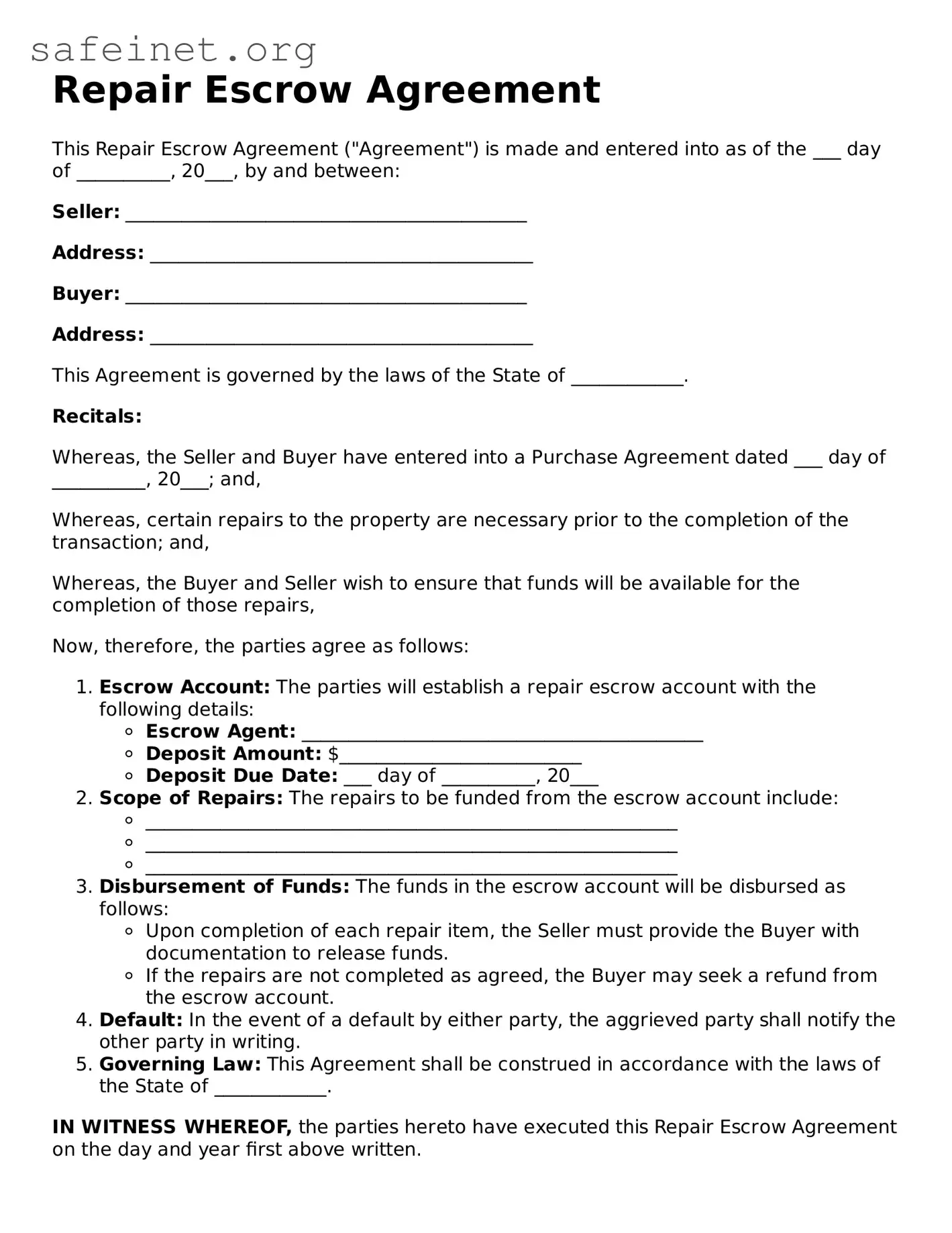Repair Escrow Agreement
This Repair Escrow Agreement ("Agreement") is made and entered into as of the ___ day of __________, 20___, by and between:
Seller: ___________________________________________
Address: _________________________________________
Buyer: ___________________________________________
Address: _________________________________________
This Agreement is governed by the laws of the State of ____________.
Recitals:
Whereas, the Seller and Buyer have entered into a Purchase Agreement dated ___ day of __________, 20___; and,
Whereas, certain repairs to the property are necessary prior to the completion of the transaction; and,
Whereas, the Buyer and Seller wish to ensure that funds will be available for the completion of those repairs,
Now, therefore, the parties agree as follows:
- Escrow Account: The parties will establish a repair escrow account with the following details:
- Escrow Agent: ___________________________________________
- Deposit Amount: $__________________________
- Deposit Due Date: ___ day of __________, 20___
- Scope of Repairs: The repairs to be funded from the escrow account include:
- _________________________________________________________
- _________________________________________________________
- _________________________________________________________
- Disbursement of Funds: The funds in the escrow account will be disbursed as follows:
- Upon completion of each repair item, the Seller must provide the Buyer with documentation to release funds.
- If the repairs are not completed as agreed, the Buyer may seek a refund from the escrow account.
- Default: In the event of a default by either party, the aggrieved party shall notify the other party in writing.
- Governing Law: This Agreement shall be construed in accordance with the laws of the State of ____________.
IN WITNESS WHEREOF, the parties hereto have executed this Repair Escrow Agreement on the day and year first above written.
_____________________________
Seller
_____________________________
Buyer
_____________________________
Witness
